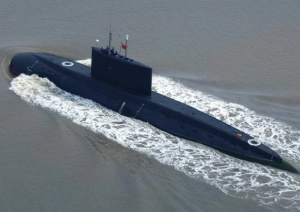
China’s intercontinental nuclear-armed rockets used to be immobile and liquid-fueled. Those rockets were configured to make a political statement about possession of nuclear weapons capability by creating uncertainty about the possibility of at least one reaching its target, not necessarily to survive a nuclear first strike. Now China is reportedly developing solid-fueled road-mobile rockets with multiple independent re-entry vehicles (MIRVs). Of even greater interest for the present discussion, China is reportedly developing submersible ships with ballistic missiles and nuclear propulsion (SSBNs) with twenty-four missiles with about six nuclear warheads per missile. These developments raise serious questions about U.S. military and diplomatic strategy vis-à-vis China.
When China’s long-range missiles were liquid-fueled and immobile (Cunningham and Fravel 2015), it was technically feasible for the United States to plan for a pre-emptive strike to limit damage from such missiles. Whether or not a U.S. posture of trying to maintain first strike capability vs. China was
politically useful, it was inherited from the Cold War strategy vs. Russia and thus the de facto situation.
Authors: Clifford Singer
Read the full publication here.
